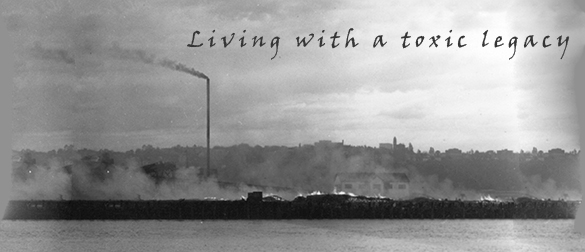Lessons Learned: Looking Back to Go Forward
A series of articles exploring historical events that provide an important lesson for ensuring a more sustainable and healthy environment. Originally published as a bulletin feature for the newsletter of CHE-WA (Collaborative on Health and the Environment, Washington State chapter); produced by Steven G. Gilbert.

The Tacoma Smelter, on the shores of Commencement Bay in Ruston, near Tacoma, Washington, began operating on September 12, 1889 to extract lead from melted metal ores. In 1902 the smelter switched to extracting copper, then in 1905 the American Smelting and Refining Corporation (ASARCO) purchased the smelter and continued to operate it primarily as a copper smelter for almost 100 years, until its closing in 1986. The smelter also extracted lead and arsenic from the ore, with some being used as pesticides in the fruit orchards of Eastern Washington.
The smelter was known for its 562-foot smokestack, which sent lead, arsenic, and other contaminants up and away from the smelter and into surrounding communities (the solution to pollution being dilution). The smokestack was demolished in 1993, but the smelter’s legacy remained: elevated levels of lead and arsenic in soils in large areas of Washington. The site was listed as a US EPA Superfund site on September 8, 1983, and ASARCO filed for bankruptcy in 2005.
Washington state and county resources have been used to educate people about potential hazards of lead and arsenic exposure, particularly for children. Many areas have been remediated but contamination is still present.
As the US industrialized, the human health and ecological costs of industrial activity were often ignored, creating the illusion of resources being cheap to extract and process. While laws such as the Clean Air Act and Clean Water Act have helped to reduce point sources of pollution, we are repeating this mistake with oil extraction and fracking. Developing countries are making the same costly mistakes, with childhood lead poisoning emerging as serious issues in places such as China and Nigeria (due primarily to metal smelting and battery production in China, and gold mining in Nigeria.) We must take into account the real costs of resource extraction and industrial development and invest in a sustainable future in which our children can reach and maintain their full potential.
